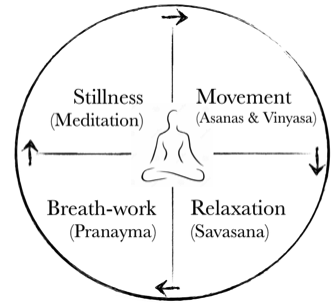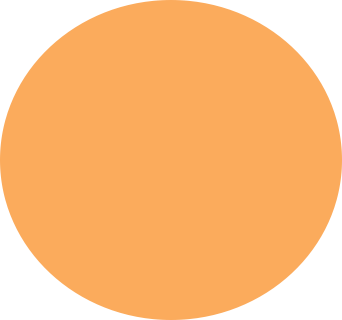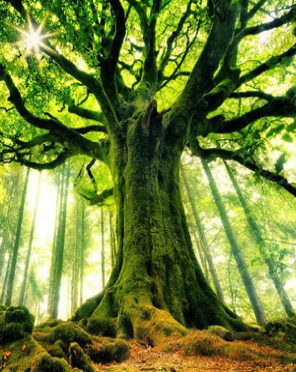Yoga
In the early days, when yoga was first being developed, the main practice was meditation or centering.
Those first Yogis found that by consciously relaxing into themselves, they were able to access new ways of knowing and being.
It was out of that centred meditative awareness that poses and other yogic techniques emerged.
Yogis simply moved into them as a result of their meditative practice. Then they practised and taught these to others as a way of finding or returning to that meditative state, a way of establishing a line of embodied connection with life.
Symbolically, they were tending the inner fire, Agni, this sacred fire of aliveness, inspiration, emergence, resulting in spontaneous, intuitive, uncalculated revelations, specific and appropriate to the moment.
There are many possible ways of understanding the meaning of yoga.
Although Yoga has its roots in Indian thought, its content is universal.
Where we begin depends on where we are at the time of our lives. We can begin practising yoga from any starting point and gradually integrate all aspects of ourselves including our relationships with others, our behaviour, our health, our breathing and our meditation path.
Yoga is a Sanskrit word coming from the root "yuj", which means to "unite" or "join" the aspects of ourselves which were never really divided in the first place. It also means to "yoke" or to engage ourselves in a self-training program, systematic process, in which we work with the grosser or more external aspects of our being, and then move inward, into more subtle practices, which gently brings us to meditation. The postures, relaxation methods, breathing practices and meditation vary, depending on our level of experience.
Practice
Preparation: Pause and take a slow long breath
We begin with grounding and by sensing the state of our body, breath and mind, gently sensing how we are, without trying to change it, simply acknowledging it. We let the body settle more fully on the ground, take a few slow long breaths and let ourselves ponder on what really matters right now, that this practice today could be in service to.
Asana: May your head, heart and base align.... Listen to your body..
During the session we go through a variety of lying down, sitting and standing positions, forward and backward bends, twists and inversions. At times we link them together into a flowing sequence. Each Asana (yoga position) or Vinyasa (a few breath linked asanas) have not only a strong physical effect on the body, bringing flexibility, alignment and releasing the unnecessary tensions but also psychological effects. Each movement unfolds some aspects of our consciousness and deepens our inner awareness. This for many of us is a beautiful and one of the most direct ways of meeting ourself. In each movement, each position we are experiencing our boundaries. We meet the limits of our bodies or the resistance of our minds. This point, this “edge”, is a highly important place; it is a creative teacher from who we can learn a lot. If we approach this resistance gently, sensitivity and consciously our body responds by opening, allowing us a greater range of motion and freedom. If we shy away from approaching our limits, we may miss our occasion to learn and in time our own dogma/tightness will contract upon itself and we may grow even tighter. If we try to push ourselves past where we are honestly able to go, we only impress ourselves with a temporary surge of ambition and this feeling could contract upon itself with subsequent tightening leading us to potentially dangerous misunderstandings. Perfection is not a goal. The goal of the asana is settle in your body and learn to perceive clearly through it.
Asana must have dual qualities of alertness and relaxation. There must be alertness without tension and relaxation without dullness or heaviness. These qualities come by recognising and observing the reactions of the body and breath in various positions – Krishnamacharya
Savasana: May your body trust the support of the ground. Let go and let yourself be ...
In relaxation, first we let go of effort of our practice, already past. Then we let go of physical tension which is nothing more than the accumulation of beliefs and attitudes that are being repeated unconsciously day after day. These habitual thought patterns cause tension held in the tissues of the body. As we consciously let go of the attachment to our image, our responsibilities, our problems, opinions, likes, dislikes - the layers of tensions melt away and we bathe and venture into more freer and alive experience of ourselves.
"Your body needs a rest, once your body is allowed to be itself, uncramped, unburdened, it has the wisdom to deal with your problems" G. Gendlin
Pranayama: May your breath be smooth, slow and serene. Enjoy your breath…
There comes a time when we move our attention towards the breath itself. Mindfully observing the way our body is breathing itself, observing how the breath affects our body and mind and how the body and mind affect the breathing. When the mind is busy, the body is tense and the breath normally becomes short, irregular and shallow. When the mind is quiet, the body is relaxed, the breath becomes easier, rhythmic and naturally deepens. According to Hatha Yoga Pradipika, observing the rhythm of the breath, brings a restless mind to stillness. Breathing practice is soothing to the nervous system and helpful for focusing attention. Much like Asanas, breathing practice helps free up tensions that are stored in the body, especially around the area of the pelvis, abdomen and diaphragm. Reconnecting with the breath through effortless observation and breathing techniques, opens doors to many life enriching experiences: a feeling of lightness, renewal of energy, a greater calmness and clarity of the mind. We realise that not only are we breathing this life, but it is also breathing us.
Meditation: May the flow of thoughts in your mind not disturb you...enjoy simple being
While sitting, you are invited settle inside (Pratyahara), centre your attention through practices of concentration (Dharana), opens and deepens into the felt sense of this moment (Dhyana) and allow the silence, stillness and spaciousness to have its way with you (Samadhi). The aim of meditation is to understand what we did not formerly understand, to see what we have not previously seen, and to be where we have never been before. It is a discovery.
"Resting in not knowing, is allowing knowing, moment by moment" T . Huebl
Yoga styles at Yoga Tree
Hatha Yoga
Releases and Energizes
Yin Yoga
Slows down and Centers
Restorative Yoga
Unwinds and Relaxes
Practitioners of yoga have different inclinations towards the Yoga practices. Some may like to spend a long time with the movement, while others prefer breathing exercises or seek the stillness of meditation. Each of these stages work together, one leading into the next. There is no perfect, one-size-fits-all formula. It is best to spend the amount of time with each stage that is just right for you. Please take care of yourself in the practice and let your body be your teacher.


Breathing
Relaxation
Movement
(active)
...one time of the day/week.... (e.g. Hatha Yoga class)
Breathing
Meditation
Movement
(slow)
...another time of the day/week.... (e.g. Yin Yoga class)
Breathing
Meditation
Relaxation
Movement
...when stressed/exhausted.... (e.g. Restorative Yoga)
Breathing
Pausing
...during daily life....


The tree is more than first a seed, a living trunk and then a dead timber. The tree is a slow, enduring force growing its roots into the ground and reaching its branches to the light...
You need to yield deeply to reach what is above you
close your eyes to see more clearly
limitation and freedom
in breath and out breath
light and darkness
difficult and easy,
all meet to reflect each other
Hatha Yoga
Ha represents the sun; active & masculine aspects (yang)
Tha is the moon; receptive & feminine qualities (yin)
In yoga the opposites meet to create balance.
strength and flexibility
stillness and movement
effort and surrender
awaking and letting go
Yoga is their union
